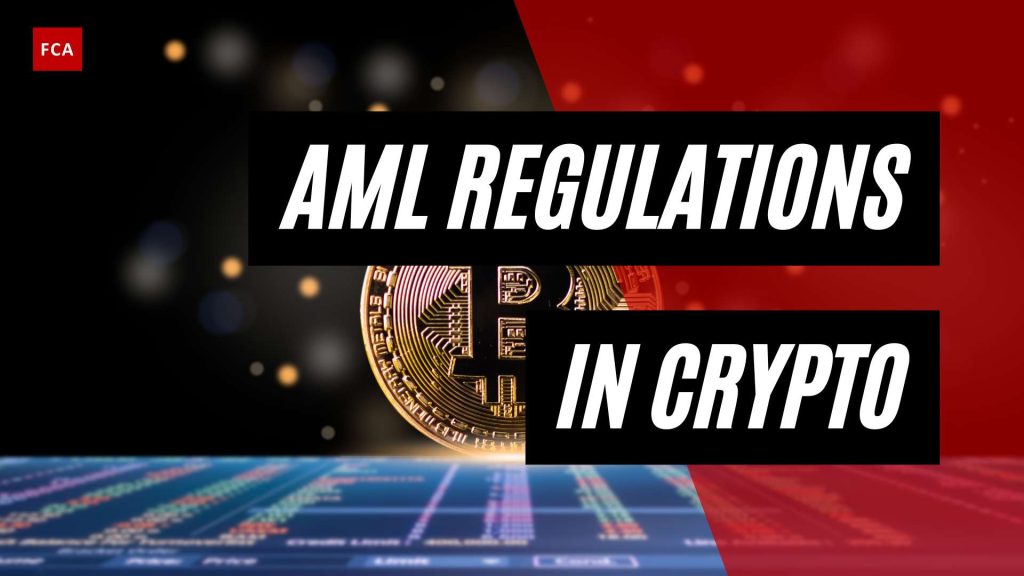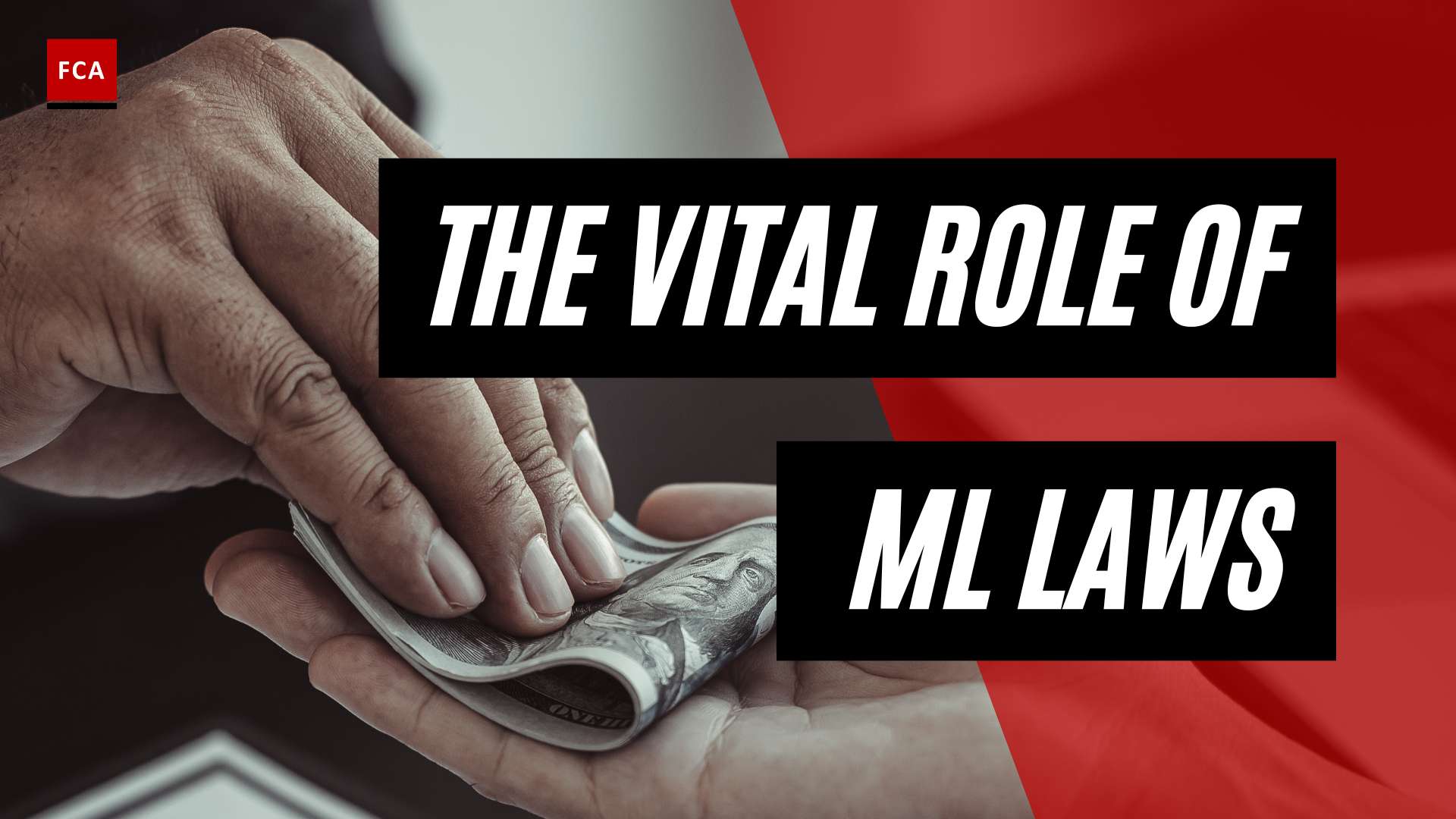Understanding Anti-Money Laundering Regulations
In the ever-evolving landscape of finance, the threat of money laundering continues to pose a significant risk. To combat this illicit activity, governments and regulatory bodies have implemented Anti-Money Laundering (AML) regulations. These regulations are designed to detect and prevent the illegal movement of funds, ensuring the integrity of the financial system. In the context of cryptocurrency, AML regulations play a crucial role in safeguarding the industry from misuse and illicit financial activities.
What is Anti-Money Laundering (AML)?
Anti-Money Laundering (AML) refers to a set of laws, regulations, and procedures aimed at preventing the conversion of illicitly obtained funds into legitimate assets. Money laundering involves disguising the origins of illegally obtained money, making it appear as if it came from legal sources. AML regulations require financial institutions, including crypto exchanges, to implement measures to identify and report suspicious transactions that may indicate money laundering or other criminal activities.
Importance of AML Regulations
The importance of AML regulations cannot be overstated. These regulations serve as a critical line of defense against the misuse of financial systems for illicit purposes. By enforcing AML measures, governments and regulatory bodies aim to protect the integrity of the financial system, prevent the financing of terrorism, and deter criminal activities such as drug trafficking, fraud, and corruption.
In the context of the cryptocurrency industry, AML regulations are particularly crucial. The decentralized and pseudonymous nature of cryptocurrencies presents unique challenges in terms of detecting and preventing money laundering. AML regulations help ensure that crypto exchanges and other virtual asset service providers comply with robust measures to mitigate these risks and maintain the integrity of the industry.
AML Regulations in the Digital Age
The advent of digital currencies has prompted the need for AML regulations tailored to the digital age. Traditional financial systems have undergone digital transformation, and regulators have recognized the importance of adapting AML frameworks to address the specific risks and complexities associated with cryptocurrencies.
AML regulations in the digital age focus on establishing clear guidelines for cryptocurrency exchanges, including detailed cryptocurrency AML guidelines and crypto exchange AML requirements. These guidelines often include requirements related to customer due diligence, transaction monitoring, reporting suspicious activities, and conducting periodic AML audits.
To stay compliant with AML regulations, crypto exchanges must implement robust AML policies and procedures. These policies should cover various aspects, including KYC procedures for cryptocurrency exchanges, AML monitoring for crypto transactions, and reporting suspicious activities to the relevant authorities. Implementing effective AML measures helps foster trust, protect the industry, and ensure compliance with regulatory obligations.
By understanding the fundamentals of AML regulations, the cryptocurrency industry can strengthen its defenses against money laundering and illicit financial activities. Compliance with AML regulations not only safeguards the industry’s reputation but also contributes to the overall integrity and stability of the global financial system.
Anti-Money Laundering in Crypto Exchanges
As the cryptocurrency market continues to grow, the need for robust anti-money laundering (AML) measures in crypto exchanges becomes increasingly important. In this section, we will explore the challenges of AML in crypto exchanges, the regulatory guidelines that govern these exchanges, and the compliance requirements they must adhere to.
Challenges of AML in Crypto Exchanges
Crypto exchanges face unique challenges when it comes to implementing effective AML measures. The decentralized and pseudonymous nature of cryptocurrencies makes it challenging to trace the source and destination of funds. This can potentially be exploited by money launderers and illicit actors seeking to conceal their transactions.
Additionally, the fast-paced and global nature of cryptocurrency transactions adds to the complexity of AML efforts. Crypto exchanges must keep up with the constantly evolving landscape of cryptocurrencies, as new digital assets and trading platforms emerge. Staying vigilant and adapting to new trends and risks is crucial to effectively combat money laundering in the crypto space.
Regulatory Guidelines for Crypto Exchanges
Regulatory guidelines play a vital role in shaping AML practices for crypto exchanges. Various jurisdictions have implemented AML regulations specific to cryptocurrencies to combat illicit activities and protect the integrity of the financial system. These guidelines typically require crypto exchanges to implement robust AML programs that include customer due diligence (CDD), transaction monitoring, and reporting suspicious activities.
Crypto exchanges should familiarize themselves with the AML regulations specific to their jurisdiction and ensure compliance with the applicable laws. Implementing effective AML procedures not only helps prevent money laundering but also helps foster trust among customers and regulators.
Compliance Requirements for Crypto Exchanges
To meet compliance requirements, crypto exchanges must implement a comprehensive set of AML measures. These measures include:
-
Know Your Customer (KYC) Procedures: Crypto exchanges are required to verify the identity of their customers to ensure transparency and prevent the use of anonymous accounts for illicit activities. KYC procedures typically involve collecting and verifying customer information, such as identification documents and proof of address.
-
Suspicious Activity Monitoring: Crypto exchanges must continuously monitor customer transactions for suspicious activity. This involves setting up robust systems and processes to detect patterns or behaviors that may indicate potential money laundering or other illicit activities.
-
Transaction Monitoring and Reporting: Crypto exchanges are often required to monitor transactions and report any suspicious activity to the relevant authorities. This includes filing Suspicious Activity Reports (SARs) or other required disclosures when necessary.
By implementing these compliance requirements, crypto exchanges can contribute to the overall efforts of preventing money laundering and illicit activities in the cryptocurrency ecosystem. It is important for crypto exchanges to stay updated with the latest regulatory developments and best practices in AML to ensure their operations remain compliant and secure.
In the next section, we will explore the role of technology in AML compliance and discuss various AML compliance tools available for crypto exchanges.
Implementing Effective AML Measures
To combat money laundering in the crypto industry, it is crucial for crypto exchanges to implement effective anti-money laundering (AML) measures. This section will explore three key components of AML implementation: Know Your Customer (KYC) procedures, suspicious activity monitoring, and transaction monitoring and reporting.
Know Your Customer (KYC) Procedures
KYC procedures are an essential part of AML compliance for crypto exchanges. These procedures require exchanges to verify the identities of their customers and collect relevant information to establish a customer profile. By conducting thorough KYC checks, exchanges can ensure that they are not facilitating transactions with individuals involved in illicit activities.
Key elements of KYC procedures include:
- Collecting customer identification information, such as name, address, and government-issued identification documents.
- Verifying the authenticity of the provided information through appropriate documentation and identity verification processes.
- Assessing the risk associated with each customer based on factors like the source of funds and the nature of the transaction.
- Periodically reviewing and updating customer information to ensure accuracy and compliance with regulatory requirements.
By implementing robust KYC procedures, crypto exchanges can enhance their ability to detect and deter money laundering activities. For more information on KYC procedures specific to cryptocurrency exchanges, refer to our article on aml policies for cryptocurrency exchanges.
Suspicious Activity Monitoring
Effective AML measures in crypto exchanges involve ongoing monitoring of customer activities to identify any suspicious or unusual transactions. Suspicious activity monitoring involves the use of advanced technologies and automated systems to detect patterns and indicators of potential money laundering.
Key aspects of suspicious activity monitoring include:
- Setting up transaction monitoring systems that analyze customer behavior, transaction volumes, and other relevant factors.
- Establishing predefined rules and thresholds to trigger alerts for potential suspicious activities.
- Conducting periodic reviews and assessments of flagged transactions to determine the legitimacy of the activity.
- Reporting suspicious transactions to the appropriate regulatory authorities as required by the applicable AML regulations.
By continuously monitoring customer activities, crypto exchanges can detect and respond to suspicious transactions promptly, mitigating the risk of being involved in money laundering activities. Learn more about the monitoring process and best practices in our article on aml monitoring for crypto transactions.
Transaction Monitoring and Reporting
In addition to suspicious activity monitoring, crypto exchanges must implement transaction monitoring and reporting procedures to comply with AML regulations. These procedures involve monitoring and analyzing transactions to identify any unusual patterns, high-value transactions, or transactions involving high-risk jurisdictions.
Key elements of transaction monitoring and reporting include:
- Tracking and logging transaction details, including the parties involved, transaction amounts, and timestamps.
- Analyzing transaction patterns and assessing the risk associated with each transaction.
- Reporting transactions that meet the threshold for suspicious activity to the appropriate regulatory authorities.
- Maintaining records of transactions and related information for a specified period as mandated by regulatory requirements.
By implementing robust transaction monitoring and reporting procedures, crypto exchanges can contribute to the broader efforts in combating money laundering and other illicit activities within the digital asset ecosystem.
In summary, effective AML measures in crypto exchanges require the implementation of robust KYC procedures, comprehensive suspicious activity monitoring, and diligent transaction monitoring and reporting. These measures help to ensure compliance with regulatory requirements and contribute to the overall integrity of the crypto industry.
Technology Solutions for AML Compliance
In the digital age, technology plays a crucial role in enabling effective Anti-Money Laundering (AML) compliance in the crypto industry. By leveraging advanced tools and solutions, crypto exchanges can enhance their ability to detect and prevent illicit activities. This section explores the role of technology in AML compliance, highlights the available AML compliance tools for crypto exchanges, and discusses the benefits and limitations of technology solutions.
Role of Technology in AML Compliance
Technology plays a pivotal role in strengthening AML compliance efforts in the crypto industry. With the increasing complexity and volume of transactions, manual monitoring and detection of suspicious activities become challenging. Here are some key ways technology aids AML compliance:
-
Automated Transaction Monitoring: Technology solutions enable the automated monitoring of crypto transactions, allowing exchanges to identify suspicious patterns and behaviors in real-time. This helps in promptly detecting potential money laundering activities.
-
Data Analytics and Machine Learning: Advanced data analytics and machine learning algorithms enable the analysis of large volumes of data, identifying complex patterns and anomalies that may indicate money laundering activities. This assists in improving the accuracy and efficiency of AML compliance efforts.
-
Risk Scoring and Profiling: Technology solutions can assist in assigning risk scores to customers based on their transaction history, behavior, and other relevant factors. This helps in prioritizing high-risk customers for enhanced due diligence and monitoring.
AML Compliance Tools for Crypto Exchanges
Various technology solutions are available to facilitate AML compliance in crypto exchanges. These tools are designed to streamline compliance processes, enhance detection capabilities, and ensure adherence to regulatory requirements. Some common AML compliance tools for crypto exchanges include:
| Tool | Description |
|---|---|
| Transaction Monitoring Systems | These systems automatically analyze transactions and detect suspicious activities based on predefined rules and algorithms. They help identify unusual patterns, high-risk transactions, and potential money laundering activities. |
| Know Your Customer (KYC) Solutions | KYC solutions streamline the customer onboarding process by verifying customer identities and assessing their risk levels. These tools assist in complying with regulatory requirements and preventing the use of crypto exchanges for illicit purposes. |
| Risk Assessment Tools | Risk assessment tools aid in assigning risk scores to customers based on various factors, such as transaction history, geographic location, and involvement in high-risk jurisdictions. These tools assist in prioritizing resources and focusing on high-risk customers. |
| Compliance Management Systems | Compliance management systems provide a centralized platform to manage AML compliance activities. These systems enable exchanges to track and document compliance measures, generate reports, and ensure adherence to regulatory obligations. |
Benefits and Limitations of Technology Solutions
Technology solutions offer several benefits in terms of AML compliance for crypto exchanges. These include:
-
Efficiency: Technology automates manual processes, reducing the time and effort required for AML compliance tasks. This improves operational efficiency and allows compliance teams to focus on higher-value activities.
-
Accuracy: Advanced algorithms and analytics enhance the accuracy of AML detection, reducing false positives and increasing the effectiveness of identifying suspicious activities.
-
Scalability: Technology solutions can handle large volumes of transactions and customer data, making them scalable to accommodate the growing demands of the crypto industry.
However, it is important to acknowledge the limitations of technology solutions:
-
Dynamic Nature: Money laundering techniques evolve constantly, and technology solutions may take time to adapt to new methods. Regular updates and monitoring are necessary to ensure the effectiveness of these tools.
-
False Negatives: Despite advanced algorithms, technology solutions may not detect all instances of money laundering. Human intervention and ongoing monitoring are still essential to complement technology-driven AML compliance efforts.
By leveraging technology solutions tailored for AML compliance, crypto exchanges can bolster their ability to detect and prevent money laundering activities. It is crucial for exchanges to stay informed about the latest developments in AML compliance technology and continuously evaluate and update their systems to align with the evolving regulatory landscape.
Staying Up-to-Date with AML Regulations
To effectively navigate the ever-evolving landscape of anti-money laundering (AML) regulations in the crypto industry, it is crucial for crypto exchanges to stay up-to-date and proactive in their compliance efforts. By understanding the regulatory landscape, investing in ongoing training and education, and collaborating with regulatory bodies, crypto exchanges can ensure they are meeting their AML obligations.
Regulatory Landscape for Crypto Exchanges
The regulatory landscape for crypto exchanges is dynamic and varies across jurisdictions. It is essential for crypto exchanges to have a thorough understanding of the AML regulations specific to their operating region. These regulations may include requirements such as customer identification, transaction monitoring, and reporting suspicious activities. By regularly reviewing and staying informed about the regulatory requirements, crypto exchanges can adapt their AML procedures and policies accordingly. For detailed guidelines on AML regulations specific to the cryptocurrency industry, refer to our article on cryptocurrency AML guidelines.
Ongoing Training and Education
Given the complexity and evolving nature of AML regulations, ongoing training and education are vital for the success of crypto exchanges in meeting their compliance obligations. By providing comprehensive training to their employees, exchanges can ensure that their staff is equipped with the necessary knowledge and skills to identify and report suspicious activities. Training programs should cover topics such as recognizing red flags, conducting customer due diligence, and implementing transaction monitoring systems. Ongoing education allows exchanges to stay informed about the latest trends and best practices in AML compliance for crypto exchanges. For more information on AML best practices, refer to our article on cryptocurrency AML best practices.
Collaborating with Regulatory Bodies
Collaboration with regulatory bodies is crucial for crypto exchanges to stay updated on the latest AML regulations and requirements. By actively engaging with regulatory authorities, exchanges can gain insights into upcoming regulatory changes and participate in discussions that shape the industry’s AML framework. Establishing a strong relationship with regulatory bodies can help exchanges proactively address compliance challenges and ensure that their AML measures align with regulatory expectations. Additionally, exchanges can leverage regulatory guidance and resources to enhance their AML programs. Regular communication and collaboration with regulatory bodies contribute to a robust AML compliance framework for crypto exchanges. For more information on conducting AML audits for crypto exchanges, refer to our article on crypto exchange AML audits.
By staying up-to-date with AML regulations, investing in ongoing training and education, and collaborating with regulatory bodies, crypto exchanges can maintain effective AML compliance programs. Upholding their AML obligations not only safeguards their operations from potential risks but also contributes to the overall integrity and trustworthiness of the cryptocurrency industry.








